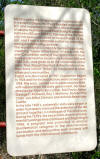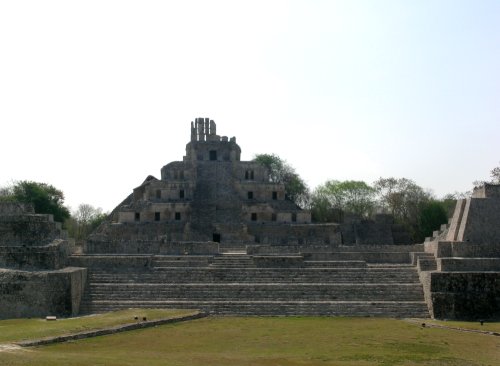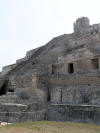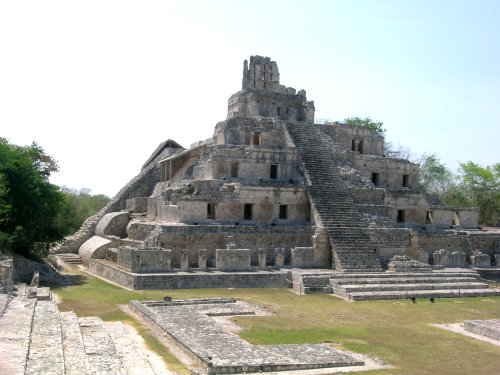Round The World and other travels
A frequent flyer's collection of trip diaries
This is: Canada & Mexico 2011
Mayan discoveries
We learned that Edzná dates from 600BC and
that the name means "House of the Itza". (The archaeological site of
Chichen Itza, some 300km away between Mérida and Cancún, is
rather more famous but infinitely more crowded.) The Mayan community
thrived in this place for centuries, with a well-ordered society
based on agriculture and respect for the community's leaders.
Surprisingly - I thought so, anyway - part of the site is a ball
court. The community finally disintegrated and the city was
abandoned around AD1500, following crop failures and disillusionment
with the priests and leaders. Luis drew an interesting parallel with
religion and politics in the modern world. We spent some 90 minutes
on-site, but despite the intense heat of the sun and incessant
pestering by the local insect life,
it seemed to pass very quickly and we both agreed that it had been
well worth the trip. Best of all, we saw only six other people
during our time at the site!
![]()
Back at the Hacienda, we had a room service lunch,
a short siesta (this practice seemed to be rapidly catching on!) and
then spent late afternoon by the pool. After freshening up, we had
cocktails on the hotel's lovely rooftop terrace, which had been
opened up now that the hotel had gone from very quiet to full in the
run-up to a US holiday weekend. Dinner, sadly, was a big
disappointment after such an otherwise successful day. We turned up
at La Pigua only to find the place near-deserted and to be
told that it would close at 9:30pm. We decided to stay, but the
staff seemed interested only in going home.
![]() Not a good experience at all!
Not a good experience at all!
Not wishing to close the day on such a note, we returned to the Hacienda and treated ourselves to a very pleasant nightcap on the rooftop terrace.














